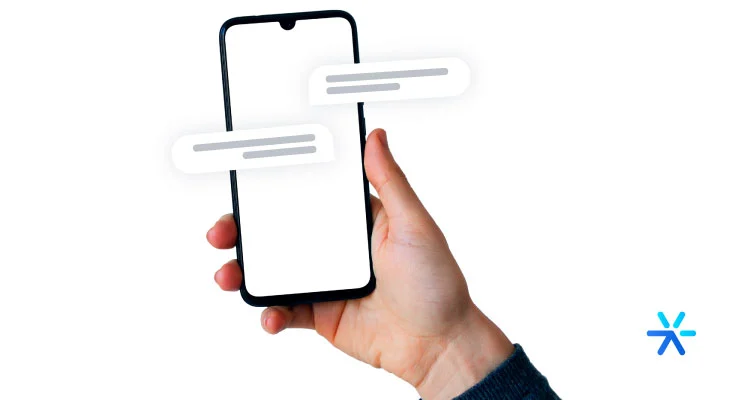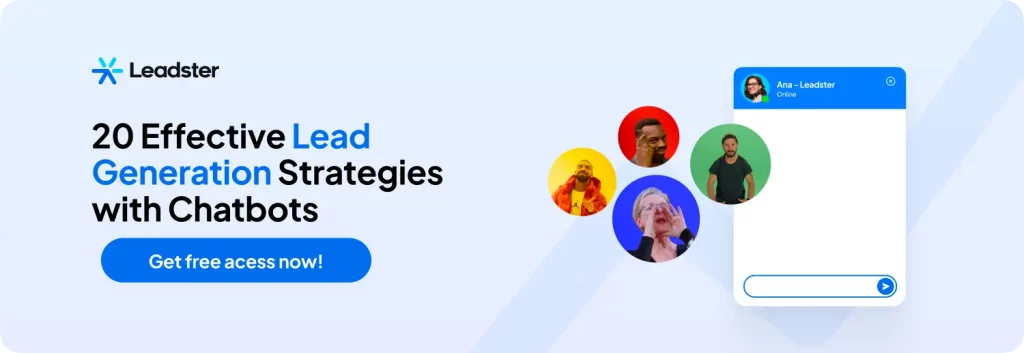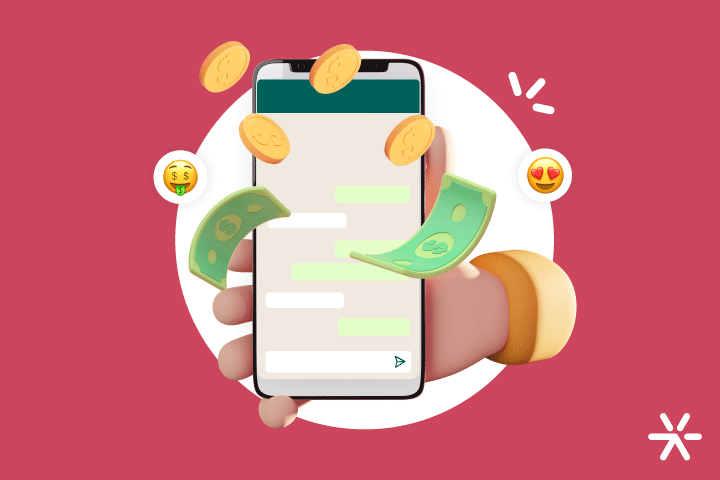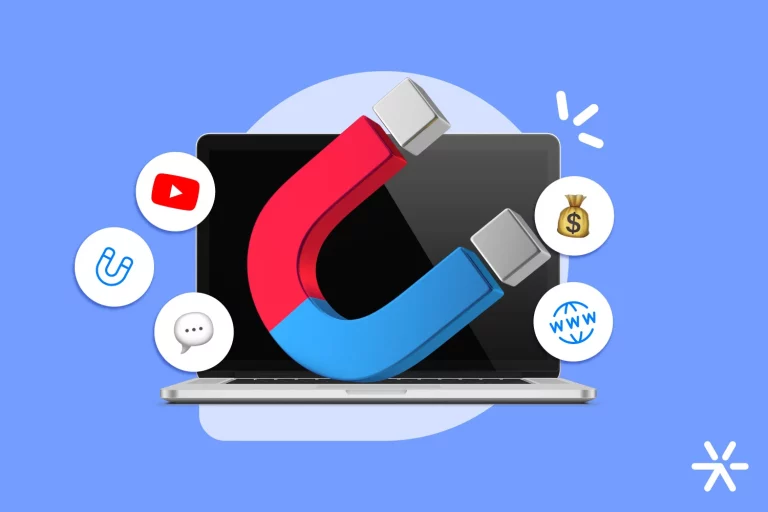10 Conversational Marketing Strategies to Use in 2024
It’s high time to consider conversational marketing strategies in your actions.
A few years ago, the concept was a trend, but today it’s a necessity.
Conversational marketing has a very broad scope, contrasting with its configuration and adoption, which are quite simple.
Even in lead generation.
In fact, this last part is still underutilized by many companies in conversational marketing strategies.
In this article, I’ll show you exactly how the relationship between leads and conversational marketing works, as well as clarify the concept a bit more.
Ready?
What is conversational marketing?

Conversational marketing is a form of marketing related to interaction.
If a person can converse with a marketing action, no matter how small it is, we are talking about conversational marketing.
For example: you enter a company’s website and there is no website – just a screen with a chatbot that guides you according to your interests.
Or an even better example: you enter a landing page to download some material, and instead of a static form, you encounter a chatbot.
Other examples of conversational marketing in practice include:
- Navigation support chatbot on the website;
- WhatsApp button with pre-qualification via WhatsApp;
- Complete landing pages;
- Responding to DMs on social media;
- Among others.
What are the advantages of conversational marketing?
The greatest advantage of conversational marketing strategies is the possibility of creating personalized approaches in your actions and on your website.
Personalized approaches alone have the ability to greatly increase your conversions. A study by HubSpot showed that personalized CTAs increase conversion rates by up to 202%.
But conversational marketing is not just free conversation.
In fact, this customization is done through audience segmentation and flows, something simple to configure by your analysts.
Because of this, the greatest advantages of conversational marketing strategies are precisely the possibility of personalizing approaches in a simple and quick way to apply.
10 Conversational Marketing Strategies to Use in 2023

So far, we’ve been talking about the reasons to use conversational marketing on your website, right?
The biggest one, for sure, is the increase in lead conversion.
The data we have from our clients actively using Leadster every day shows a growth of up to 3x in the number of leads.
But what exactly are these people doing to achieve such results?What are the best conversational marketing strategies for 2023?
That’s what we’re going to talk about now.
Data point for nurturing flows
Data-driven marketing – or data-guided marketing – requires many data points, many data inputs for the strategy to always be the best possible.
A chatbot integrated with your CRM provides important behavior variables on your site.
You can create nurturing flows related to how visitors interacted with your chatbot.
For example: someone enters your site and starts a conversation with your chatbot. They accepted the free trial, but never used it.
It’s difficult to know what happened to this visitor, their reasons for signing up for the trial but never using it.
But at least this behavior is “recorded” – and from there, you can create a personalized nurturing flow for your lead.
Replacement of the WhatsApp button
Having a WhatsApp button on your website is a great idea.
The issue is that the WhatsApp button has some very basic limitations.
If your site only has the button, you don’t have conversion and bounce rate metrics and you can’t qualify that lead at the time of contact.
Basically, the lead falls into the sales team’s WhatsApp with only two pieces of information: their phone number and their first name (at most).
Not to mention that the lead going to WhatsApp via the button needs to be manually entered into your database.
And if you’re getting 50 contact requests per day?
You’ll need to attend to all 50 and still register them manually.
A chatbot helps you by pre-qualifying this lead, offering its own metrics, and automatically registering the lead in your preferred platform, via integrations.
Salespeople roulette
Still in the case of the WhatsApp button, even with a chatbot installed, which number will leads chat with?
The WhatsApp button allows instant access to a link to start a conversation with a specific number.
But what if your team has 5 people working at the same time?
Do all 5 need to respond on the same number?
This creates chaos, and chaos means wasted time and, consequently, money.
Leadster’s chatbot has the Attendance Roulette feature for WhatsApp, allowing up to 12 numbers to be registered in it.
In this feature, each contact is directed in order to this roulette.
Julio receives a contact, then Angela, then Jose, and so on until it returns to Julio.
Form Replacement
Forms are less efficient than chatbots in lead conversion.
The format is dated, customization is minimal, and the bureaucracy ends up deterring many people.
All your landing pages can have, instead of forms, chatbots with a personalized approach for each material.
This increases conversion and your lead’s identification with your brand.

Lead generation anywhere on the website
A chatbot, as you’ve seen so far, is a fundamental part of your lead generation strategy.
It’s an active tool in your lead generation efforts.
For a long time, lead generation worked in a more passive way.
You rank well for your site organically, or run some ads on Google and social media, and leads end up landing on a conversion-optimized page.
On this page, there are CTAs that lead to a form where the visitor becomes a lead by providing their information.
Do you see the path the visitor takes?
They need to land on specific pages to convert.
Usually, it’s your blog or an optimized landing page.
What the chatbot does is expand this opportunity to your entire website.
You can generate leads on any category, even on the homepage.
And even on the blog, conversion can happen while the reader is researching.
With a chatbot, the conversion opportunity follows the reader as they conduct their research.
Qualification of leads simple and instantaneous
Lead qualification today mainly happens through forms. And forms are the worst way to generate and qualify leads.
You can even conduct surveys via chatbot.
The commands and keywords you can configure are capable of qualifying any lead in a fun way that doesn’t involve lengthy forms.
Including a preliminary qualification, as we mentioned in the WhatsApp button. Imagine receiving all your communications with name, email, and company identification?
And speaking of that:
Audience segmentation for specific support
A great conversational marketing strategy is to send leads to WhatsApp, as we’ve mentioned throughout the text.
But this comes with challenges.
Who will attend to whom?
In a sales team, it’s common for each person to “handle” a different segment, product, or even a different region.
The chatbot allows you to quickly qualify and send the contact directly to the seller or responsible department.
Conversational home page
Have you ever imagined a site where the homepage is a chatbot?
This is one of the boldest conversational marketing strategies, but some brands have already tested it and certify that it’s a genuine way to capture visitors’ attention.
Especially nowadays, in the post-modern era of digital marketing.
Buttons are already completely ignored on the site, and they are the main conversion driver on the home page.
With a chatbot, conversion becomes simpler and guaranteed, as well as more enjoyable.
Check out the example on the An Artful Science website by clicking the link.
Integration with CRM
The first conversational marketing strategy isn’t exactly an active strategy that will make a direct difference in your conversion.
But it’s important so that you can measure your results and organize the leads you generate from a chatbot.
Leadster offers integration with the leading CRMs and inbound marketing platforms in the market. To name a few:
- Hubspot;
- LAHAR;
- ActiveCampaign;
- PipeRun;
- Salesforce;
- Fleeg;
- Exact Sales;
- Sirena.
We also have support from Zapier, Webhook, and Pluga so that you can make more integrations with other tools.
Integration with your chosen CRM is the first step for conversational marketing strategies to really work.
You can create inbound flows and organize your contact list much more efficiently, using the features that your chatbot platform offers plus those provided by your CRM.
5 statistics that prove conversational marketing is the future

So, what did you think of these conversational marketing strategies for 2023?
I understand that most of your reservations on the topic are not related to the effectiveness of the chatbot.
In these 10 strategies, we’ve shown in practice that it works.
The problem is their longevity, right?
How can you know if chatbot strategies will remain relevant for the future?
How can you ensure the investment in the tool?
That’s why I brought statistics about conversational marketing strategies that address this.
Here are some:
23% of consumer service companies use chatbots
According to a survey by Salesforce, 23% of all consumer service-oriented companies – B2C – actively use chatbots on their websites.
This number will increase even more as user expectations are met by technological advancements.
And speaking of these expectations:
68% of people prefer the speed of chatbots
In a 2022 survey, Userlike determined that 68% of people prefer chatbots for the speed of service.
And even though the statistic favors chatbots, it’s by no means a novelty.
Think about yourself: what do you prefer?
Immediate service that can be resolved in 2 minutes or service only on weekdays, during business hours, and with delays?
33% of users consider chatbots “very efficient”
In a Statista survey, 33% of users consider chatbot service “very efficient.”
And the best part is that 54% of the people surveyed said that chatbots are “efficient,” with only 13% saying they are completely inefficient.
With this, we can say that 87% of the people surveyed see chatbots as efficient.
Point for conversational marketing strategies!
Chatbots handle a complete conversation 69% of the time
Another prejudice debunked.
Many people think that chatbots will never be able to complete a conversation or handle a specific user request.
But the statistics say otherwise.
According to a 2022 Comm100 survey, 69% of the time, chatbots can completely fulfill the visitor’s request without involving human agents.
In the end, it’s as if people don’t care if the service is done by chatbots or humans: the important thing is to solve the problem.
But this is an assumption.
Is there any study that proves this?
40% of people don’t care if the service is via chatbot or human
A HubSpot survey determined that 40% of people don’t mind if the service is done by humans or a chatbot – the important thing is to resolve the issue.
And another equally interesting survey determined that 63% of people don’t know and don’t care if their service is done by a human.
Convenience is the key to business!
As long as everything is working and going well for your customer, visitor, or lead, they will use the channels you provide – whether it’s human or a robot. 🤖
Before finishing this article I need to make one point very clear: chatbots do not exist to replace human interaction.
They operate in very different areas.
Look at the WhatsApp button example again: a chatbot helps you qualify your leads so that people in the sales department can work more effectively.
That’s the great strength of technology – helping humans explore 100% of their talent.
And that talent is irreplaceable.
All these conversational marketing strategies are easy to put into practice.
In fact, you can apply them today.
Take a free trial of Leadster and see what you can already achieve 😉
Thank you for reading and I’ll see you in the next article 🚀








